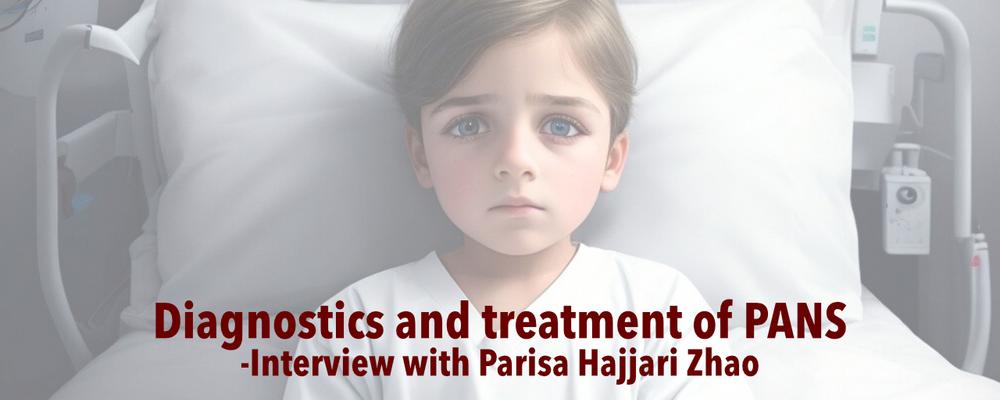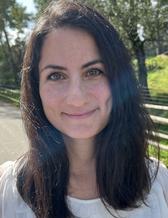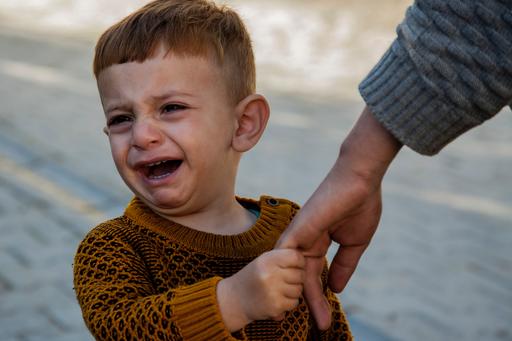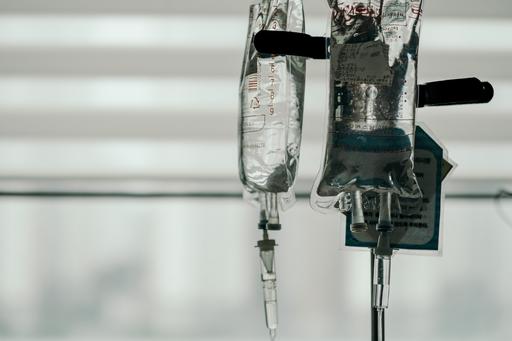
- Home
- Research
- Find research
- Diagnostics and treatment of Paediatric Acute-Onset Neuropsychiatric Syndrome (PANS)
Diagnostics and treatment of Paediatric Acute-Onset Neuropsychiatric Syndrome (PANS)
Interview with Parisa Hajjari Zhao, a doctoral student at GNC specialising in treatment and diagnostics in PANS/PANDAS

Parisa, please tell me a bit about yourself
- I became a licensed physician in 2016 and at that time chose to specialise in the best field available, namely paediatric medicine. My interest in paediatric medicine was actually present from the very beginning, when I started my medical studies, and it was solidified when I took the paediatric course in my final semester. I then completed my residency with a focus on outpatient care, based at the child and adolescent unit in Kungälv. During the five-year residency, I spent the majority of my time at Queen Silvia Children's Hospital, but in addition to that, I also spent a year in Kungälv, a year at North Älvsborg County Hospital in Trollhättan, and six months at the Child Neuropsychiatry Clinic (CNC) in Gothenburg. When I completed my paediatric training in December 2021, I decided to continue working in outpatient care and continued my position at the child and adolescent unit in Kungälv, where I am primarily based.
- Subsequently, in early autumn 2022, I was accepted as a doctoral student after conducting research at the Gillberg Neuropsychiatry Centre (GNC) for a couple of years. At present, I am on parental leave with my first child and am combining this with my research. When I'm not working, I enjoy spending time with my family and friends. Additionally, I have a passion for travelling! Some of my historically favourite destinations include Peru, Venezuela, Mexico, China, Vietnam and Cambodia.
How did you become interested in research? What issues interest you?
- I was interested in research already as a teenager in high school. When I started the medical program, I was very focused on the studies themselves. When it was time for the thesis project, I thought I wanted to do something fun and exciting, and that's how I ended up at Columbia University in New York, in the department of 'Behavioural Medicine.' I had the opportunity to use data from a randomised controlled study and got to publish the results in a scientific journal. It was then that I truly gained insight into what it's like to conduct research.
- In paediatric medicine, I've always been interested in two areas, namely neurology and immunology. Even today, we only have knowledge of a fraction of these complex organs and their physiology and pathological mechanisms for various diseases. My interest in research has grown stronger over the years as I've worked with and met patients, allowing me to delve into different conditions. The deeper you go, the more questions arise as you realise there are knowledge gaps in many areas. For example, there's a group of diseases called autoimmune encephalitis (autoimmune brain inflammation) where children and adults suddenly develop a combination of severe psychiatric and neurological symptoms. In children, the neurological symptoms are particularly prominent, while in adults, it's the psychiatric symptoms. It was not until 2007 that an antibody against a receptor in the brain called NMDA was successfully identified, marking the beginning of discovering more of these autoantibodies and describing more and more types of autoimmune encephalitis. During my specialtiy training, I came into contact with some cases of autoimmune encephalitis at Queen Silvia Children's Hospital and decided that my scientific work would focus on this patient group. I was very fascinated by how inflammation in the brain could cause such severe psychiatric symptoms and how a therapy focused on immunomodulatory treatment led to symptom improvement and, in many cases, recovery. Later in my training, when I had a placement at CNC, I had the opportunity to meet some patients with PANS together with Mats Johnson and Elisabeth Fernell. They had built up a team with expertise and a research foundation in the field, along with Christopher Gillberg. So inspiring and at the forefront! Eventually, I was asked if I wanted to start researching at the GNC, and I thought, 'what an honour, of course I want to!'
What is your PhD project about? What questions do you want answers to?
- My doctoral project revolves around delving deeper into the condition known as PANS (Paediatric Acute Onset Neuropsychiatric Syndrome). We need to gain a better understanding of how to diagnose and treat this condition. Specifically, I aim to further investigate the demographic factors and symptomatology, whether inflammation can be detected through MRI of the brain using specific sequences, if any abnormal samples/markers can be identified in the blood of these patients, and to explore whether intravenous immunoglobulin may lead to an improvement/symptom reduction.
For those of us not familiar with PANS, please can us a bit about this diagnosis?

- Certainly! During the 1990s, the condition known as PANDAS (Paediatric Autoimmune Neuropsychiatric Disorder Associated with Streptococcal Infections) was first described by the paediatrician Susan Swedo and her research colleagues in the USA. In a 1998 article, she detailed 50 cases of a condition characterised by sudden onset of obsessive compulsions and/or tics, along with other associated neurological/psychiatric symptoms. These associated symptoms could include separation anxiety, aggressiveness, emotional instability, behavioural regression, hallucinations, sleep problems, hyperactivity, and hypersensitivity, all of which could manifest simultaneously. A streptococcal infection was suspected as a triggering factor for these symptoms, similar to rheumatic fever and Sydenham's chorea. The theory was that the streptococcal infection triggered an autoimmune condition affecting the brain and causing the sudden onset of neuropsychiatric symptoms. Eventually, it was observed that other pathogens, such as different bacteria and viruses, could also trigger similar symptoms. In 2012, the criteria for PANDAS were modified to describe PANS. A new set of diagnostic criteria for PANS was proposed, where the primary symptom was a sudden onset of obsessive compulsive symptoms and/or eating disorders, and at least two additional associated symptoms should occur with an equally sudden onset. These associated symptoms are the same as those described in PANDAS. PANS was long a subject of controversy, with skeptics arguing that there was a lack of evidence to suggest that the condition is of an inflammatory nature, and that there were no treatment studies for this patient group. In recent years, more and more studies have emerged, and PANS clinics have been established in various parts of the world, contributing to a greater understanding and acceptance of the diagnosis.
- In studies, it has been observed that PANS typically manifests in children before puberty, and it is not uncommon for there to be another neuropsychiatric diagnosis present prior to the onset. Autoimmune diseases also occur more frequently among first- and second-degree relatives of these children.
You have written and published your first paper. What was the paper about?

- The first article describes the results of an open-label treatment study where we have investigated the effect of intravenous immunoglobulin (IVIG) on children with PANS. In this study, we have included children with severe symptoms and significant functional impairments related to PANS. At the outset of the study, the children have met with a medical doctor, psychologist, nurse, and physiotherapist for a comprehensive assessment of their symptoms and functional limitations. Cognitive testing, as well as neurological and motor assessments, have been conducted. Parents and school personnel have also provided assessments of the symptoms. Blood samples have been taken to examine various markers, including indicators of inflammation. Subsequently, the children have been offered three IVIG treatments spaced one month apart, followed by new assessments and tests. In this study, the children have been consecutively recruited and are planned to be followed up for a total of 18 months after inclusion. There is also the possibility of receiving an additional three treatments beyond the initial three. In my first article, we describe the results after the first three IVIG treatments for 10 children.
What were the findings?
- All 10 children received three treatments spaced one month apart. We compared symptoms and functional impairments before and after treatment using two rating scales, the PANS scale and the Clinical Global Impression scales, which served as our primary outcome measures. Following the treatments, significant improvements were observed in both symptoms and functioning. Nine out of the 10 children were deemed to exhibit a clear clinical response to treatment, defined as a >30% reduction in total scores on the PANS scale. We also noted a clinical improvement in obsessive symptoms specifically, and school attendance showed a distinct increase after the three treatments. Three children experienced moderate to severe transient side effects (headache, vomiting, allergic reaction). These side effects were previously known and did not pose an impediment to ongoing treatment.
What are the implications of the findings for practice and therefore for clinical work?
- The goal is to find specific drug treatments for this group of patients, and this is a step in the right direction. Furthermore, we need to investigate the effect of IVIG treatment on more patients and also gather long-term results to see how long symptom improvements persist.
What will the other 3 papers be about?

- One article will focus on further exploring the patient group in terms of demographic factors and symptomatology. We aim to gain a deeper understanding of which children are affected, how the onset of the illness occurs, which symptoms are most common, and other factors including comorbidity, heredity, etc.
- The other two articles will revolve around diagnostic markers such as radiology and laboratory tests. We would like to investigate whether signs of neuroinflammation can be detected through magnetic resonance imaging of the brain, utilising a specific program that facilitates the detection of inflammation. Such knowledge could potentially contribute to easier diagnosis and more targeted treatments.
- Within the IVIG study, we have collected blood samples from the children before and after treatment, partly to determine if we can identify any anomalies in the samples as a common denominator among the patients. Additionally, we aim to ascertain whether signs of inflammation can be detected through laboratory analysis, and if the test results change after IVIG treatment.
What has been the highlight of your research career so far?
- Meeting all the children involved in the studies and their parents is a profound experience. Many of the children we meet have very severe symptoms and significant disabilities. It feels incredibly rewarding to contribute to advancing knowledge in this field of research. Additionally, having the opportunity to collaborate with and be guided by individuals like Mats Johnson, Christopher Gillberg, Elisabeth Fernell, and Jennifer Frankovich in the USA is an immense privilege, as they are exceptionally competent and experienced.
What challenges do you envisage whilst doing your PhD studies? Have you experienced any difficulties so far?
- A challenge we have encountered is obtaining sufficient financial resources for our studies. Pharmaceutical studies often incur significant costs, particularly regarding intravenous immunoglobulin. Consequently, the studies have not been able to progress at the pace we had hoped for.
Please tell us 5 interesting things about yourself.
- I enjoy Latin American music and dance, especially salsa.
- I am 33 years old and have visited 33 countries.
- I was active in the Young Researchers Association as a youth and founded my own research association in high school.
- I have Iranian heritage and speak Persian.
- I have a strong phobia of spiders.

